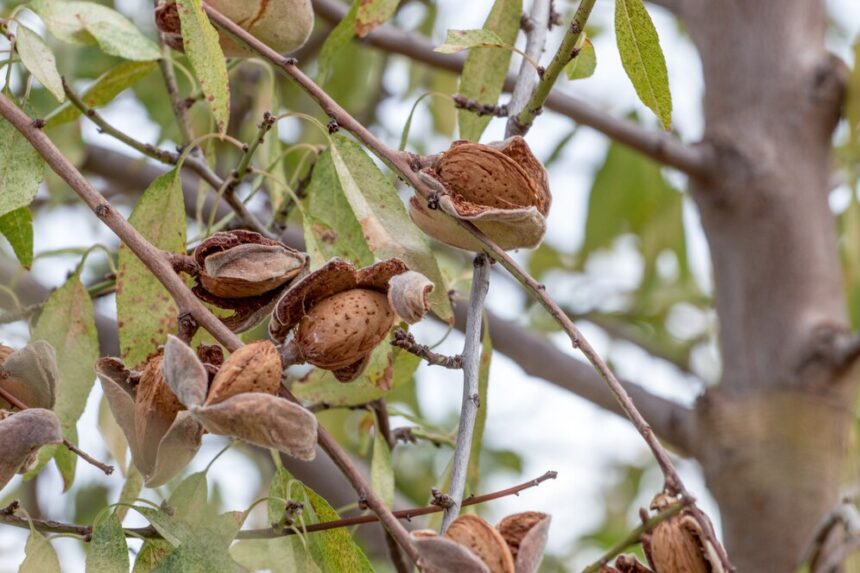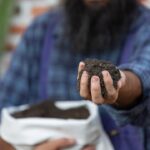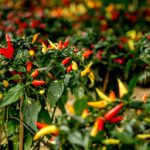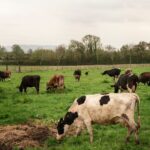Almond farming is gaining popularity as a profitable agricultural venture, especially in regions with suitable climates. Almond trees are known for their nutritious nuts, which are in high demand worldwide. For beginners, understanding the basics of almond cultivation is essential to set a strong foundation for success.
1. Understanding the Almond Tree
Almonds (Prunus dulcis) belong to the Rosaceae family. They thrive in Mediterranean-type climates with warm, dry summers and mild, wet winters. The trees typically start bearing nuts from the third year after planting and reach peak production between 7 and 8 years.
2. Suitable Climate and Soil
Climate: Almonds need a chill period during winter (200–500 hours below 7°C) followed by warm, dry conditions for flowering and nut development. They are sensitive to frost, especially during bloom.
Soil: Almonds grow best in deep, well-drained sandy loam soils with a pH of 6.0 to 7.5. Avoid waterlogged or saline soils, as they can stunt growth and reduce yield.
3. Choosing the Right Variety
Popular almond varieties include:
- Nonpareil: Widely grown, excellent quality, but needs a pollinator.
- Carmel: A good pollinator for Nonpareil with high yields.
- Tuono: Self-pollinating and more suited for organic farming.
Choose a mix of compatible varieties to improve cross-pollination and increase yields.
4. Land Preparation and Planting
Prepare the land by deep plowing, leveling, and adding organic matter. Almond trees are usually planted in winter or early spring, with spacing of about 6–7 metres between trees and 6–7 metres between rows.
Before planting:
- Dig holes of 60 × 60 × 60 cm.
- Fill with a mixture of soil, compost, and organic manure.
- Water the holes before transplanting the seedlings.
5. Pollination and Flowering
Most almond varieties are not self-pollinating and require bees for cross-pollination. Maintaining beehives in the orchard during bloom significantly enhances nut set and yield.
6. Irrigation and Fertilization
Irrigation: Young trees need regular watering every 7–10 days. Mature trees require irrigation during dry periods, especially during flowering, nut setting, and filling stages.
Fertilization: Almond trees need nitrogen, phosphorus, and potassium. Apply organic compost during planting, and follow with balanced chemical fertilization based on soil tests. A common practice includes nitrogen top-dressing in early spring.
7. Pruning and Maintenance
Prune almond trees annually to shape the canopy, remove dead branches, and improve air circulation. This helps in disease prevention and ensures better sunlight penetration for nut development.
8. Pest and Disease Management
Common almond pests include aphids, mites, and borers. Diseases such as leaf curl and rust can affect the health of the tree.
Use integrated pest management (IPM) techniques:
- Monitor regularly.
- Use organic or chemical sprays only when necessary.
- Encourage natural predators and beneficial insects.
9. Harvesting and Post-Harvest
Almonds are usually ready for harvest between late summer and early autumn. When the outer hulls split open, the nuts are shaken off the trees manually or with mechanical harvesters. Allow them to dry thoroughly before storage to prevent mold.
10. Marketing and Profitability
Almonds can be sold raw, roasted, or processed into oil, butter, or flour. With rising global demand, especially in health-conscious markets, almonds offer high returns for well-managed farms.
Almond farming requires patience, proper planning, and careful management. For beginners, starting on a small scale, learning from local experts, and continuously improving practices can lead to long-term success in this lucrative field. With the right approach, almond farming can become both a rewarding and sustainable agricultural enterprise.
Join 'Farmers Mag' WhatsApp Channel
Get the latest Farming news and tips delivered straight to your WhatsApp
CLICK HERE TO JOIN






